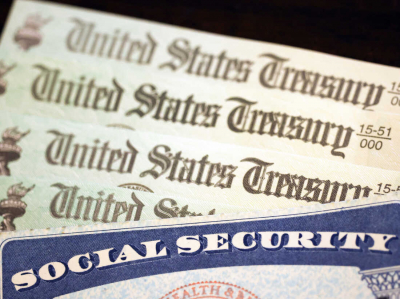
Federal Reserve Chair Jerome Powell and his colleagues opted to maintain interest rates at a 23-year peak on Wednesday, as they grapple with persistent inflationary pressures. The central bank's decision, aimed at reining in stubborn inflation, suggests that any relief for borrowers might not materialize until September at the earliest.
Inflation, though somewhat subdued compared to previous periods, remains a concern," stated the Fed's rate-setting committee in a released statement. "Recent months have seen limited progress towards achieving the Committee's 2% inflation target.
Data from the Commerce Department reveals that consumer prices surged by 2.7% in March compared to a year earlier, a metric closely monitored by the Federal Reserve. Despite this, Fed Chair Powell expressed skepticism about the necessity of further interest rate hikes to combat inflation. "I anticipate a gradual decline in inflation throughout the year," Powell remarked during a press briefing. "However, my confidence in this outlook has waned.
Since July of the preceding year, the central bank has maintained its benchmark interest rate within the range of 5.25% to 5.5%. Initially, policymakers had entertained the idea of reducing this rate by an average of 0.75 percentage points in the current year. However, hopes for such a decrease have dwindled as inflationary trends show little sign of abating.
While the prices of certain goods, such as automobiles and furniture, have seen declines, service-related costs, such as dining out and vehicle maintenance, continue to rise. The influence of higher interest rates on the demand for services is typically less pronounced, complicating the Fed's efforts to stabilize prices.
Ernie Tedeschi, Director of Economics at the Yale Budget Lab, elaborated, "Large goods purchases like cars or homes often involve loans, whereas services spending is less sensitive to interest rates.
Recent data from the Commerce Department indicates a growing tilt in consumer spending towards services, further underscoring the challenge faced by the Federal Reserve in taming inflationary pressures.
Moreover, a substantial portion of Americans remains insulated from the impact of rate hikes, having secured low, fixed-rate mortgages and carrying minimal credit card debt.
Oren Klachkin, a financial market economist at Nationwide, points out that consumer willingness to dine out and visit malls remains relatively robust, largely due to their limited exposure to the high-interest rate environment. "The absence of significant financial strain encourages consumer spending on discretionary items like dining and shopping," Klachkin explains. "However, this also implies that the decline in inflation may not be as rapid. It's a tradeoff we're currently navigating.
Federal Reserve Chair Jerome Powell dismissed comparisons to the 1970s-era "stagflation" scenario, characterized by sluggish economic growth and elevated inflation. "I don't perceive the presence of stagflation dynamics," Powell remarked, debunking suggestions from some Republicans regarding parallels with that period.
In conclusion, the Federal Reserve's decision to maintain interest rates at a 23-year high reflects its ongoing efforts to address persistent inflationary pressures. Despite optimism from some quarters regarding a gradual decline in inflation, challenges persist, particularly in balancing the need to support economic growth with the imperative of price stability. As consumers navigate the current economic landscape, characterized by varying degrees of financial resilience and spending patterns, policymakers face the delicate task of calibrating monetary policy to steer the economy towards a sustainable equilibrium. With uncertainties abound, the Federal Reserve remains vigilant, adapting its approach as needed to foster a stable and prosperous economic environment.





